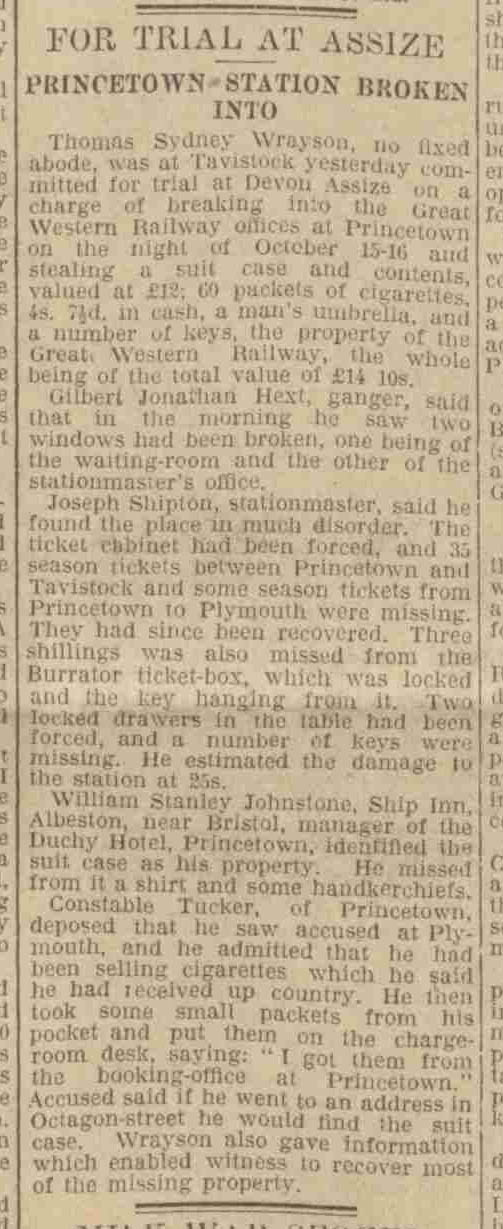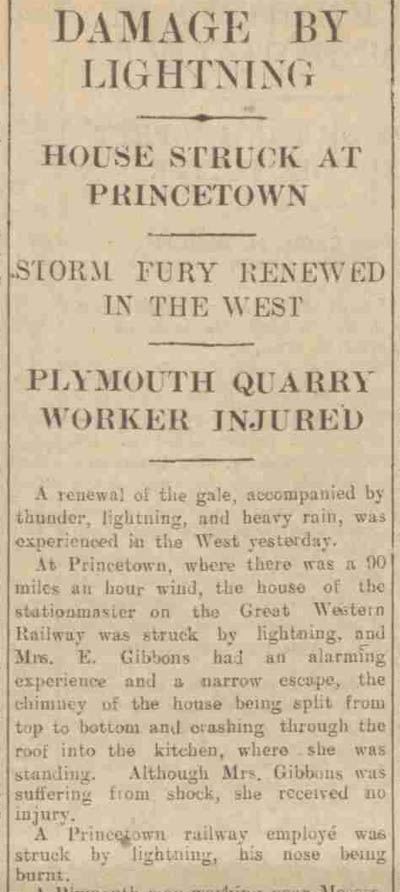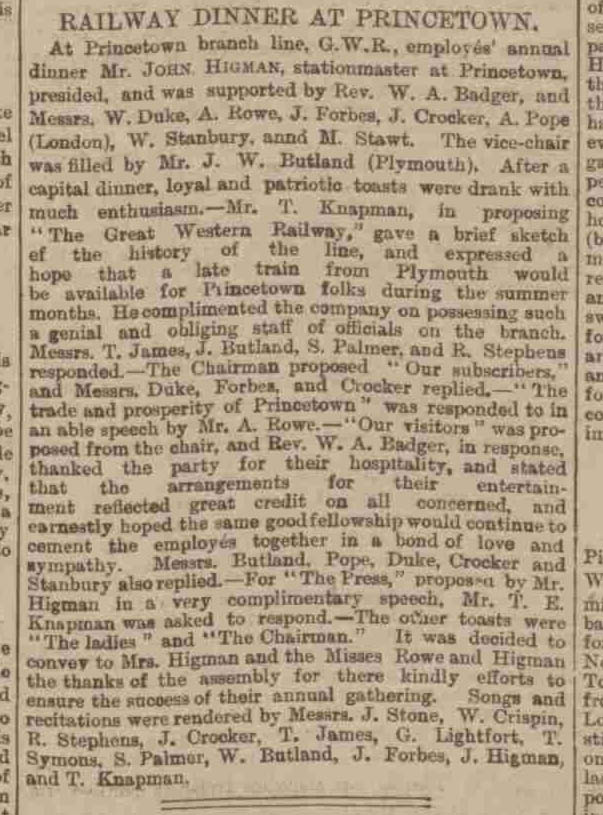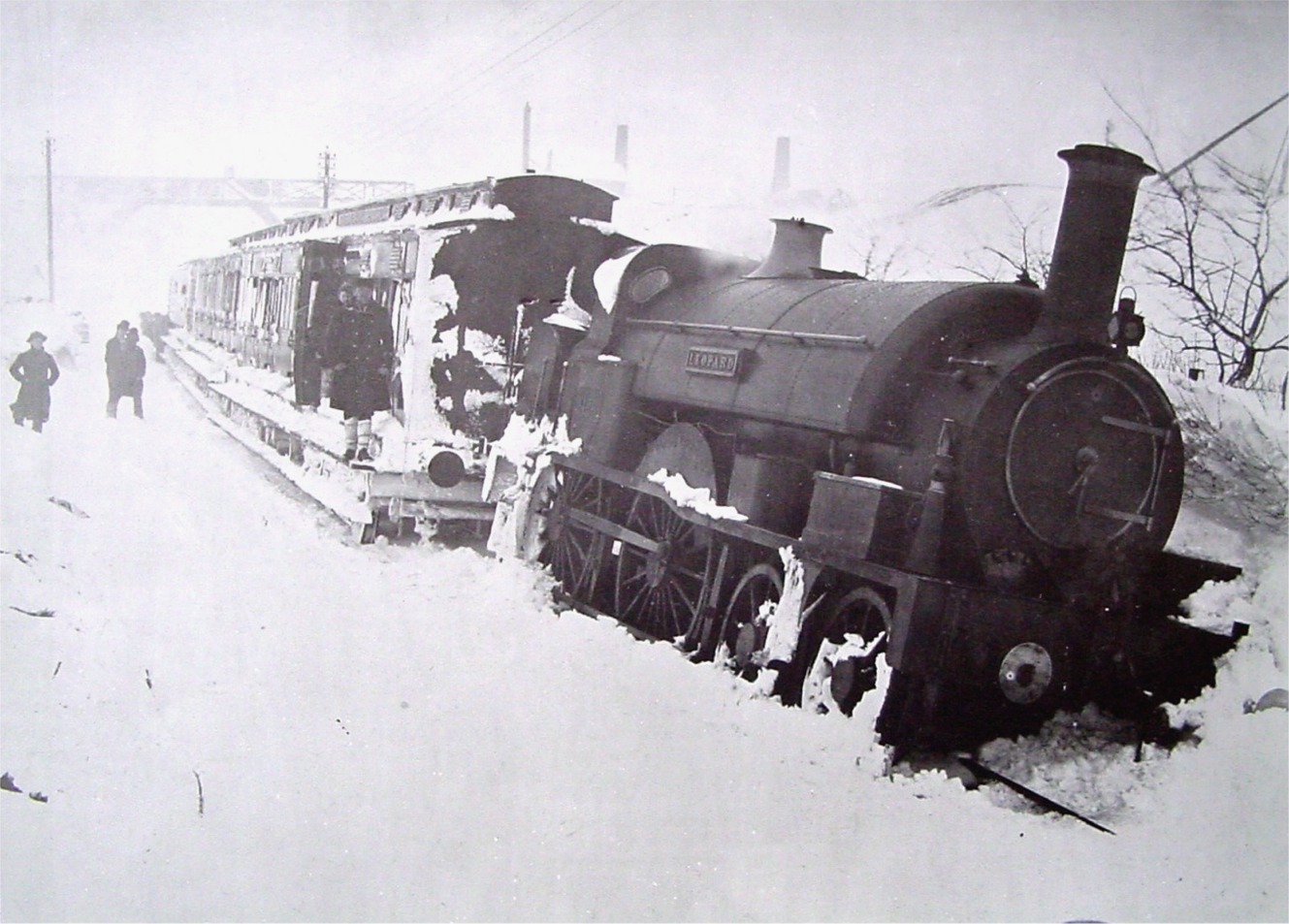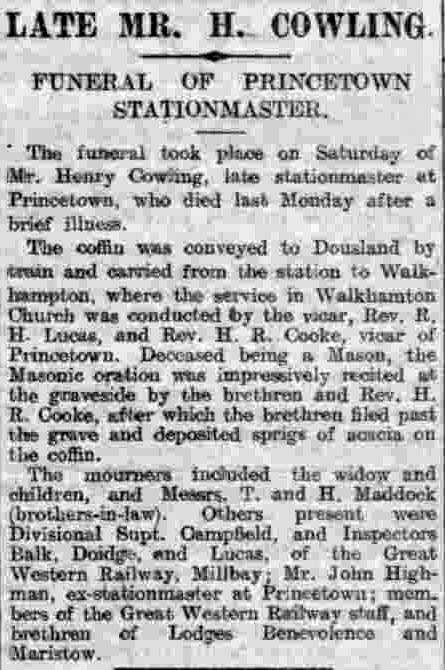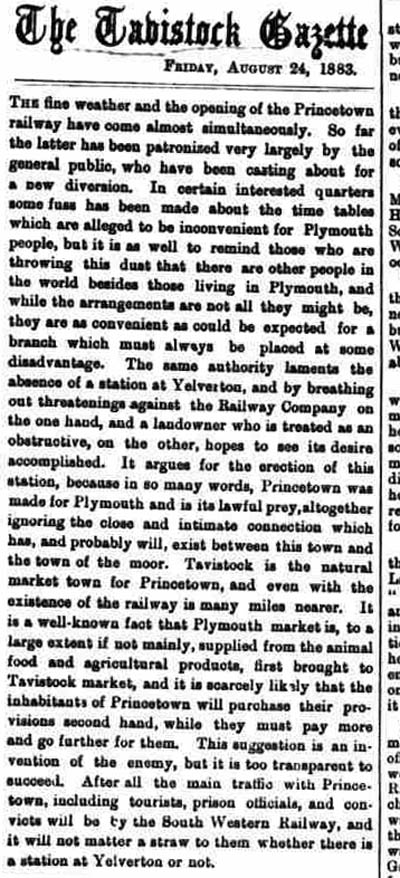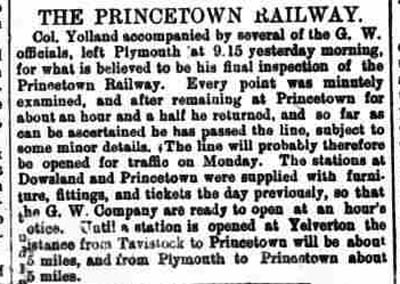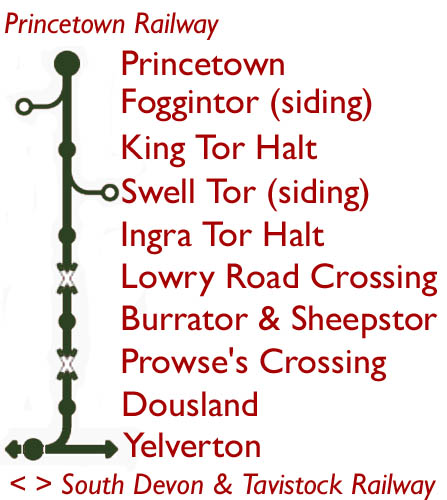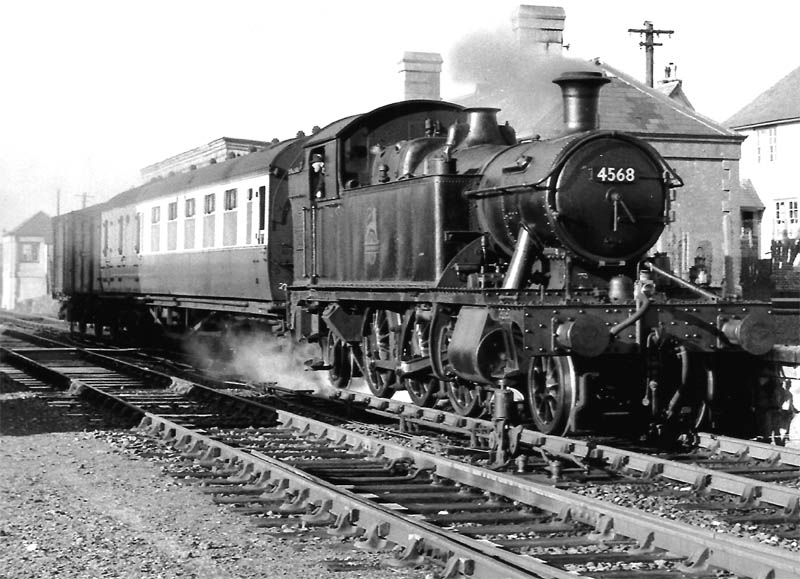
The Princetown Railway was a single track branch line in Devon, South West England, operated between Yelverton to Princetown.
Through available public archive and print news coverage, these pages look at the history, development and running of services. With news articles we discover how life was for those who worked and lived on this West Devon, Dartmoor line – the dramatic weather, the bleakness and beauty, daily life, the inclusion of the prison, the fight to keep it and the community as a whole from the 1800’s until the end of the line in the mid 1950’s.
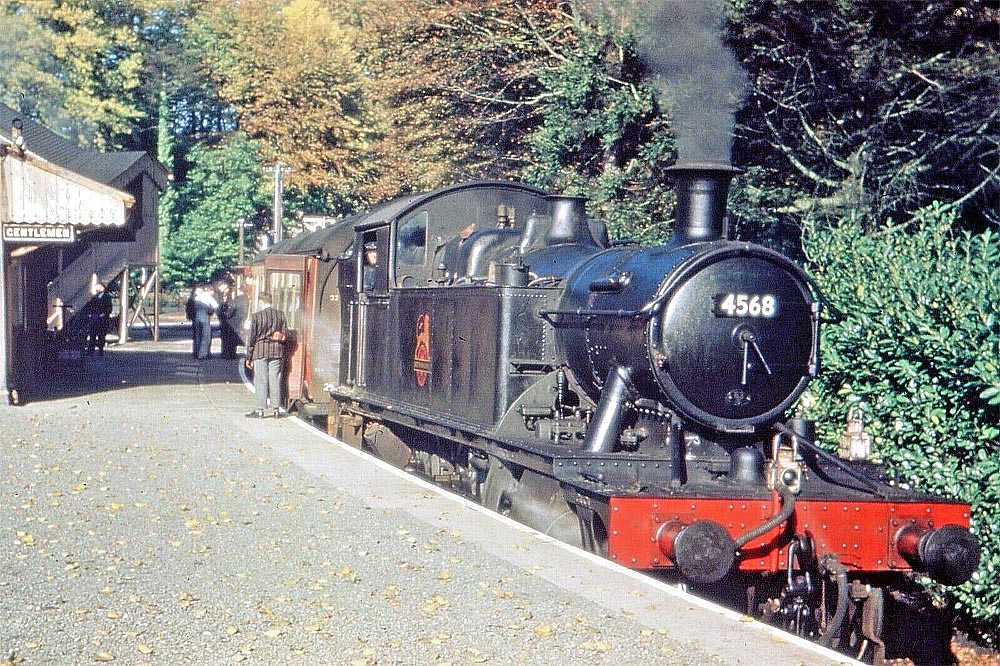
Part 1: The Early History of the Princetown Railway
Part 2: The Second Railway to Princetown
Part 3: Absorption by Great Western Railway and the Impact of Nationalisation
Part 4: The Closure and Legacy of the Princetown Railway
Final Conclusion
In Brief
The Princetown Branch was most famous for its striking moorland landscapes, though it also had a reputation for being unprofitable. The concept of a railway from Plymouth to Princetown dates back to 1818, with the aim of opening up the rugged Dartmoor region. By 1823, the Plymouth & Dartmoor Railway had reached Kings Tor, and two years later, the line was completed to Princetown. The railway primarily transported granite and other minerals from the moor, while coal, lime, timber, and supplies for the prison made the return journey.
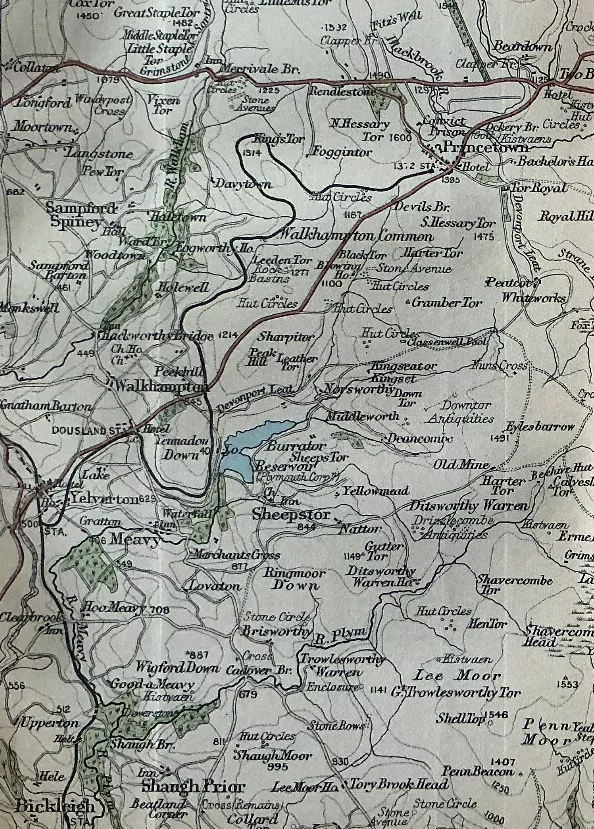
As freight traffic diminished over time, only the southern section of the line remained operational, primarily serving the china clay industry from Lee Moor. In 1883, the Yelverton-to-Princetown section was replaced by the Princetown Railway, operated by the Great Western Railway (GWR). However, the Princetown Railway wasn’t officially part of GWR until 1922. Prior to the construction of Yelverton Station in 1885, trains operated to and from Horrabridge on the Plymouth-to-Launceston railway, which was itself a branch line.
The ten-and-a-half-mile stretch of railway between Yelverton and Princetown traversed the rugged terrain, negotiating tors that made the direct route of only six miles by air a much longer journey on foot. The journey was both spectacular and unique, taking passengers to an elevation of 1,373 feet at Princetown, making it the highest station in England. With a steep gradient of 1 in 40, the railway’s route closely followed that of its predecessor.
The branch line struggled to survive due to the sparse population it served. After the granite quarries shut down in the early 1920s, GWR sought to boost passenger numbers by opening halts at Burrator and King Tor. A third halt, Ingra Tor, followed in 1936. These halts were designed to attract hikers and families looking for a picnic on the moor, but the railway’s primary passengers remained schoolchildren and commuters travelling to Tavistock and Plymouth. Uniquely, convicts were also frequent travellers, escorted by warders as they moved to and from the prison.
During particularly harsh winters, the railway was Princetown’s only link to the outside world, as roads were often blocked by snow. In these times, freight—especially food and fuel—became the main concern rather than passengers, ensuring that the town, prison, and livestock on the moor were supplied with essentials.
The increasing costs of running the railway, coupled with competition from road transport, led to the line’s closure long before the infamous Beeching cuts. The first signs of impending closure were evident as early as 1954, and despite protests from various groups, the line finally closed in March 1956. On the final day, hundreds of curious onlookers made the journey one last time, marking the end of 73 years of railway service to Princetown and 133 years of local railway history.
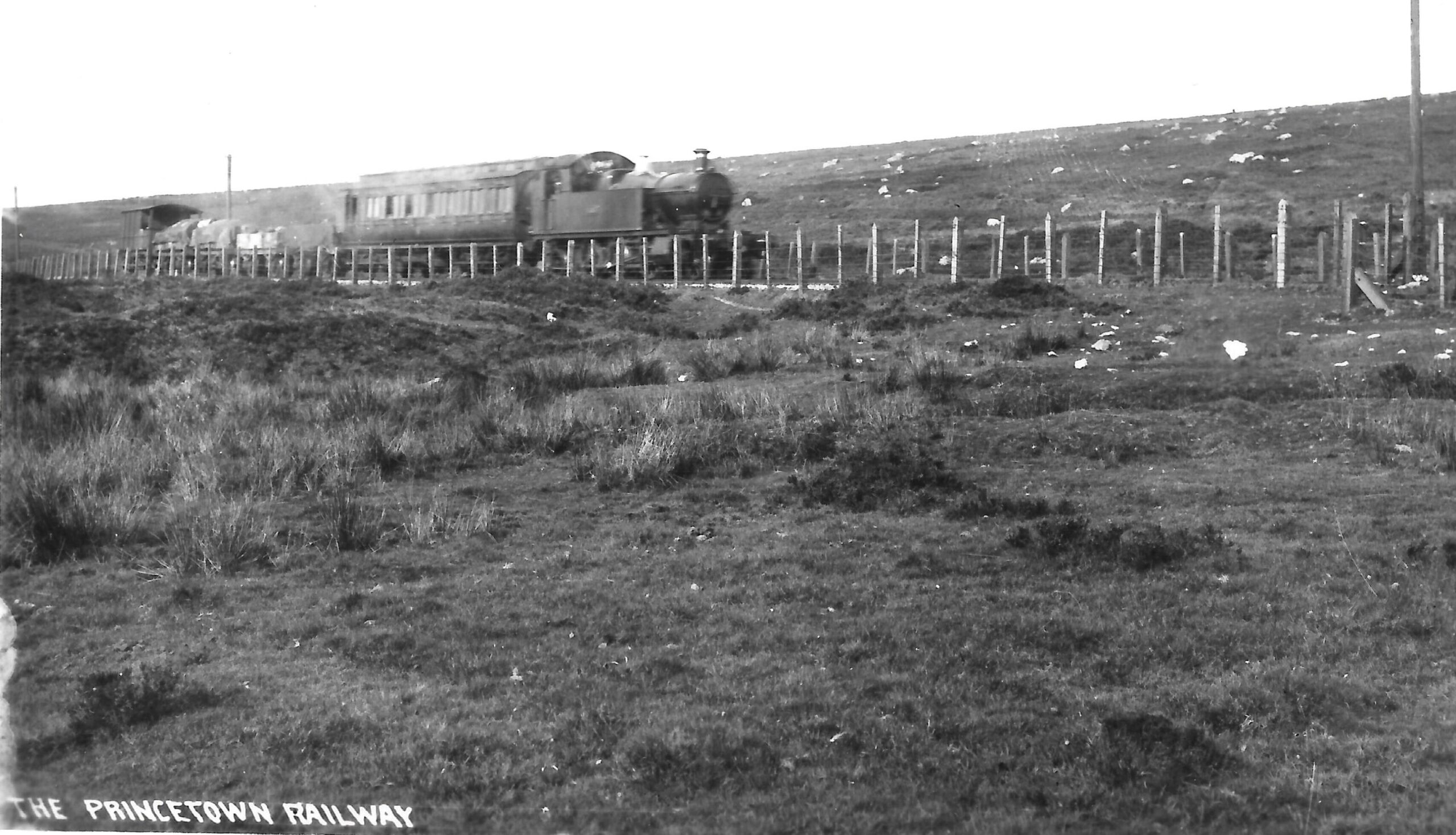
Though local and national newspapers covered the closure extensively, the Princetown Railway never became a privately preserved steam railway, as some had hoped. There was an attempt to raise funds to buy the line in 1956, but it failed due to a lack of support. The public had yet to fully appreciate the loss of their railways, and it would take years for the preservation movement to gain momentum.
One might reflect on the fact that with more railway closures still occurring today, much of the Princetown trackbed remains intact between Peek Hill and Princetown. Perhaps, with sufficient funding, there may still be a future for this scenic route.
Part 1: The Early History of the Princetown Railway
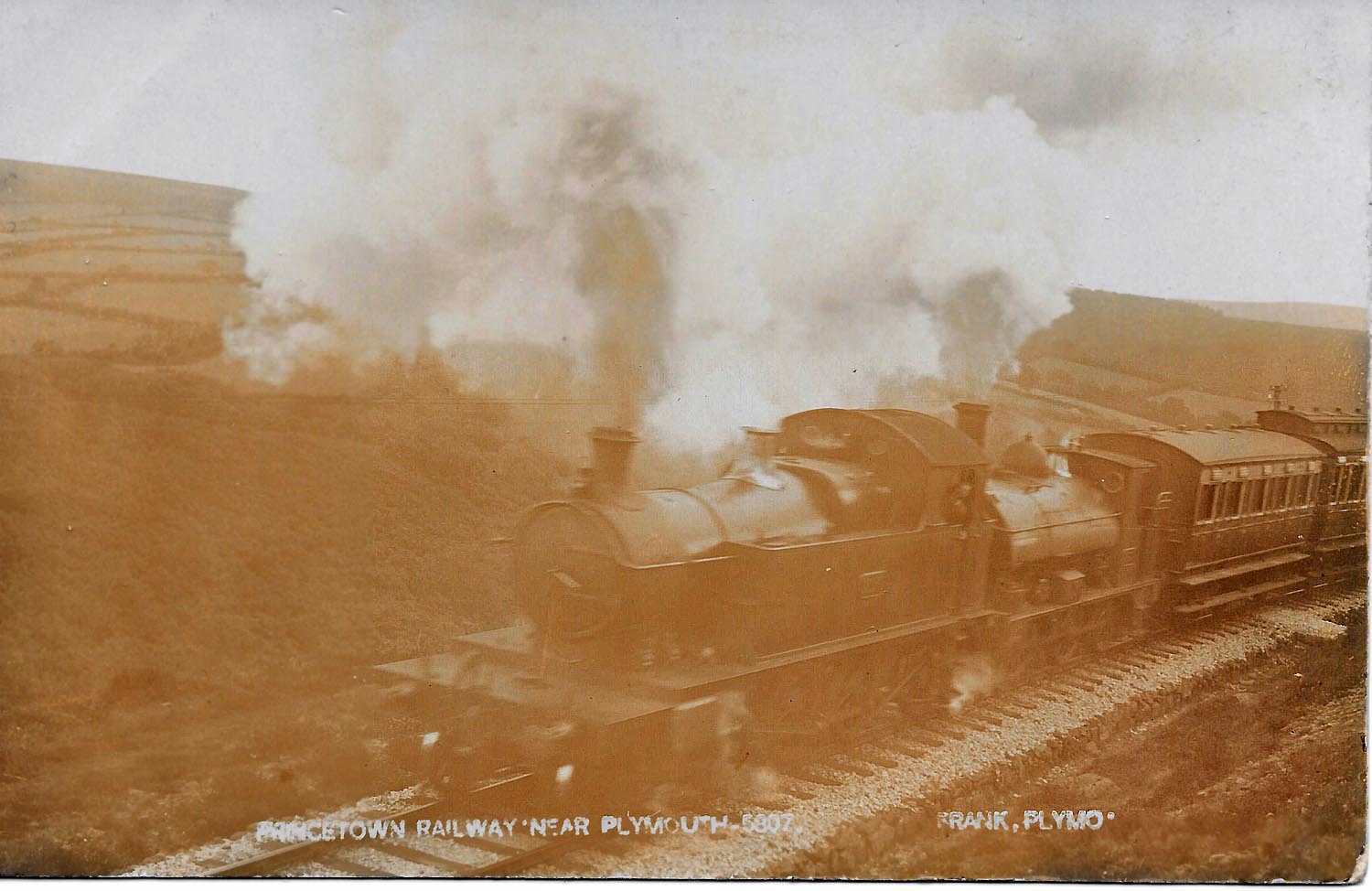
The Princetown Branch, famous for its striking moorland scenery, was known for its ongoing financial challenges. The idea for a railway connecting Plymouth to Princetown was first suggested as early as 1818, with the aim of opening up Dartmoor for trade and travel. The Plymouth & Dartmoor Railway, initially designed to transport granite and minerals from the moor, opened to Kings Tor in 1823, with the final stretch to Princetown completed by 1825. The upward traffic comprised coal, lime, timber, and supplies destined for the prison.
Despite these efforts, the decline in freight traffic eventually left the southern portion of the line operating solely to serve the china clay trade from Lee Moor. This led to the replacement of the Yelverton-to-Princetown section with the Princetown Railway in 1883. The line was operated by the Great Western Railway (GWR) from the start, but it didn’t formally become part of GWR until 1922. Before the construction of Yelverton Station in 1885, trains travelled between Princetown and Horrabridge on the Plymouth-to-Launceston railway, which was also a branch line.
The ten-and-a-half-mile route was particularly rugged, with the two towns of Yelverton and Princetown being just six miles apart as the crow flies. Travelling this line was always a unique experience; passengers ascended over 950 feet from Yelverton to reach the terminus at Princetown, which sits 1,373 feet above sea level, the highest railway station in England. The railway’s ruling gradient of 1 in 40 followed much of the path of the earlier route it replaced.
The line struggled financially due to the sparse population it served. The closure of the granite quarries in the early 1920s further depleted the railway’s freight traffic, so GWR attempted to boost passenger numbers by opening several halts aimed at moorland hikers and families. Burrator Halt opened first, followed by King Tor Halt, and later, Ingra Tor in 1936. However, most of the railway’s regular passengers were schoolchildren and commuters traveling to Plymouth and Tavistock. Interestingly, convicts were also frequent passengers, escorted by their warders to and from the nearby prison.
During severe winters, when snow blocked the roads, the railway became Princetown’s only link to the outside world. During these times, freight – especially food and fuel – took priority over passengers, ensuring the town and prison were well-supplied.
In the 1950s, the costs of operating the railway, along with competition from road transport, led to the line’s closure years before Dr. Beeching’s cuts began affecting other British railways. By 1954, it was clear the line’s days were numbered, and despite the outcry from local residents and railway enthusiasts, the railway was officially closed in March 1956. On the final day, crowds gathered to take one last journey, marking the end of 73 years of history for the Princetown Railway, and over 130 years of local railway activity.
Though there were hopes of preserving the line as a heritage railway, the movement to preserve railways had not yet gained sufficient momentum. Attempts were made to raise funds to purchase the railway, but they failed due to a lack of support. It would take many more years for the public to fully appreciate the loss of such railways, by which point the opportunity to preserve the Princetown Railway had long passed.
However, much of the old track bed remains intact, and with sufficient funding, perhaps the scenic route could one day be revived as a heritage railway, offering visitors a chance to experience the wild beauty of Dartmoor once again.
Part 2: The Second Railway to Princetown
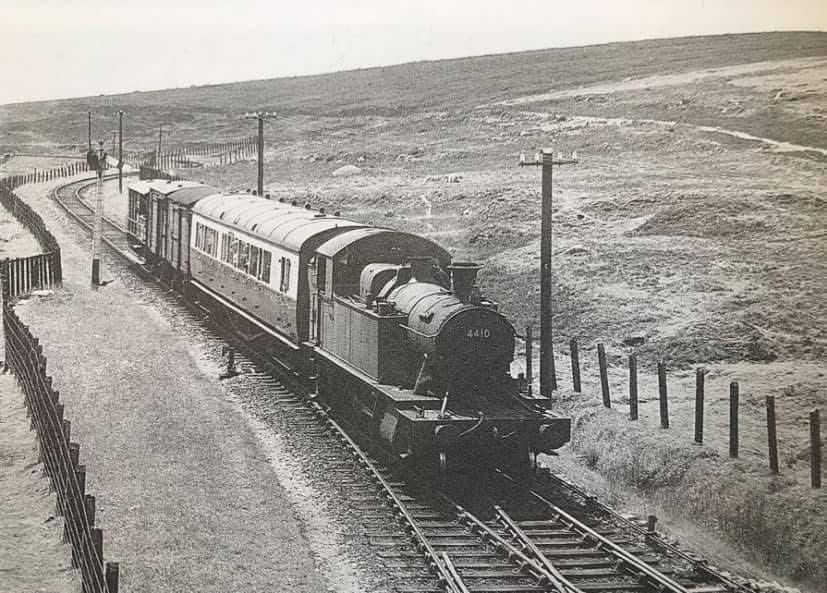
On 11th August 1883, Princetown finally gained a railway that connected it not only to Plymouth but to the entire country. Trains initially linked up with the Tavistock branch at Yelverton Junction, although passengers could only board or disembark at Horrabridge, as Yelverton didn’t yet have its own station. At the time, local residents of Yelverton were opposed to having any goods yard or station nearby, fearing it would lower the area’s status.
This situation changed after two years of negotiation, and by 1885 a station was constructed at Yelverton, serving trains on both the Tavistock and Launceston line and the Princetown railway. Yelverton station officially opened on 1st May of that year, and the initial service offered four trains in each direction daily on weekdays. By 1887, the schedule expanded to five trains a day, with extra services on Mondays, Wednesdays, and Saturdays, plus two trains running on Sundays.

In the early years, much of the railway’s traffic was freight, transporting general goods for the town and prison, as well as granite from nearby quarries. Prisoners often travelled in special compartments, separated from the growing number of regular passengers.
Winter on Dartmoor was always challenging, with frequent snowstorms affecting the higher parts of Devon. In 1891, the region experienced its worst blizzard in living memory. The storm was particularly harsh on Princetown due to its elevation. On 9th March, a train from Princetown became stuck in a snowdrift near Eggworthy Cutting, with six passengers aboard. Despite attempts to free the train, the passengers were stranded overnight, enduring intense cold until they were finally reached by three railwaymen the following day. It wasn’t until eight days later that the train was finally freed.
By 1893, work on the Burrator Reservoir began, providing the railway with increased passenger traffic, mainly from workers employed on the project. Although the granite for the dam was quarried locally, the railway still benefited from the influx of workers into the area. Over time, the line’s growing popularity with both locals and visitors was established, though freight traffic, especially granite, continued to play a significant role.
Part 3: Absorption by Great Western Railway and the Impact of Nationalisation
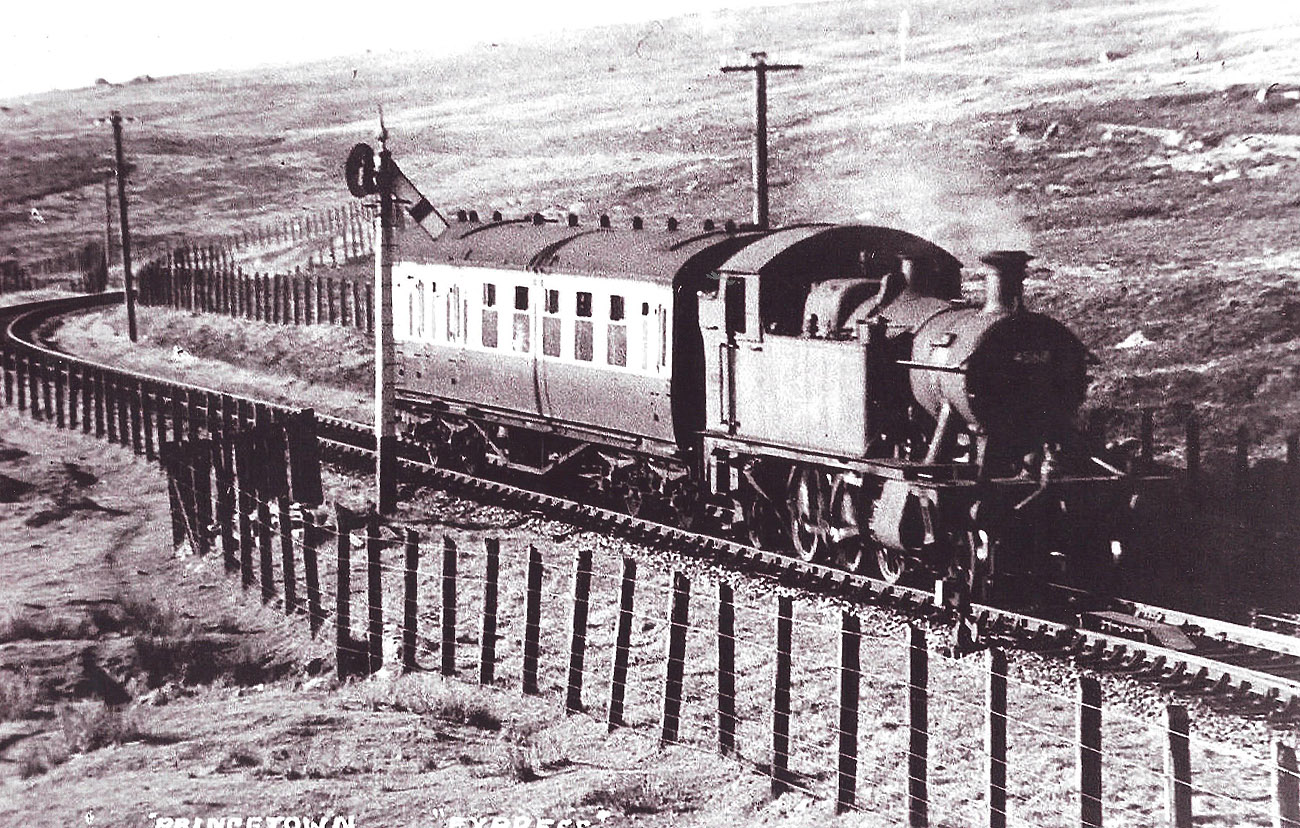
By 1922, the Princetown Railway became part of the Great Western Railway (GWR), in line with the Railways Act of 1921, which consolidated numerous smaller railway companies into the “Big Four”. This formal absorption was a direct result of growing financial difficulties for many independent railways, including Princetown.
At the time, bus services in Devon were gaining popularity, particularly with Devon Motor Transport, which had established routes between major towns, including Princetown. In response to this growing competition, GWR began its own bus services, but the railway’s fate was sealed by the new economic realities and the rapid development of road transport.
In the years that followed, Princetown experienced a short-lived boom in passenger traffic during the outbreak of World War II. During the war, the railway became an essential lifeline for Princetown, as road conditions deteriorated and resources were stretched. However, post-war Britain saw a decline in rail traffic, as road transport became even more dominant.
The nationalisation of British railways in 1948 was the final chapter in the history of the Princetown Branch. While under British Railways (Western Region), the line struggled to remain operational. By 1954, talks of closure had begun, and despite various protests from locals, the closure was announced for 1956.
On 3rd March 1956, the last train ran along the Princetown line. Hundreds of passengers, eager to take one final trip along the branch, filled the train in a sombre yet nostalgic farewell to the railway. Although some hoped that the line would be preserved as a heritage railway, these hopes were never realised. By 1957, demolition of the line began, and the once-busy railway was consigned to history.
Part 4: The Closure and Legacy of the Princetown Railway
Following its closure, the railway quickly fell into disrepair. By 1957, demolition crews began dismantling the line, removing tracks, signals, and level crossings. The process was completed by the end of the year, leaving only traces of the railway’s once vital presence. Some remnants—such as platforms and signage—persisted in a state of decay for several years, with only faint reminders like the famous “snake notice” at Ingra Tor still visible, though weathered beyond recognition.
In 1956, there had been attempts to raise funds for the preservation of the Princetown line as a privately run steam railway. Unfortunately, this effort lacked sufficient backing, as the public, at that time, did not yet fully grasp the cultural and historical value of railway preservation. The nascent preservation movement would gain traction only years later, by which time it was too late for Princetown.
Looking back, with many other lines still facing closure across the UK in the following decades, there is perhaps a glimmer of hope. The track bed of the Princetown line, particularly the section between Peek Hill and Princetown, remains largely intact. Perhaps, with renewed interest and financial support, a revival of the line could still be possible, offering a unique opportunity to experience the beauty of Dartmoor from the vantage of a heritage railway.
The Princetown Railway, despite its picturesque scenery and connection to a rich local history, faced a fate familiar to many rural branch lines across the UK. Economic realities, particularly the rise of road transport, combined with the remote nature of its location, led to its eventual closure in 1956. For over 70 years, the line served the community, carrying both freight from the quarries and passengers—including the unusual addition of convicts escorted to and from the prison.
The closure of the railway marked the end of an era for Princetown, and although there were attempts to preserve the line for future generations, these efforts failed. The demolition of the railway in 1957 removed most physical traces of its existence, leaving only scattered remnants of its infrastructure across Dartmoor. Even so, the story of the railway has not been forgotten, thanks to the efforts of historians, local enthusiasts, and publications like this one.
Today, much of the old track bed still winds across the moor, a silent witness to a bygone era. While hopes of a revival as a heritage railway remain slim, the legacy of the Princetown Railway endures in the memories of those who experienced its final days and in the pages of history.
In Brief
The Princetown Railway, operated by the Great Western Railway Company, commenced operations on Saturday, August 11th, 1883. This arrangement continued until January 1st, 1922, when the Great Western Railway Company formally took over the Princetown Railway Company.
During this period, Yelverton Station served as the terminus of the Princetown Railway, situated on the Plymouth to Tavistock and Launceston Branch. Apart from Yelverton, there were only two other stations along the line: Dousland and Princetown. To accommodate goods traffic, sidings were established at Walkhampton Common (later renamed Eggworthy Siding), Swell Tor Sidings, and Royal Oak Siding. Since Yelverton lacked the necessary facilities, all goods traffic continued through to Horrabridge Station.
The initial locomotives employed on the Princetown Branch in 1883 were two 0-6-0 tanks manufactured by Messrs Sharp, Stewart and Company of Manchester in 1865. These locomotives had previously operated under the Llynvi and Ogmore Railway Company at Porthcawl, Glamorganshire, before being acquired by the Great Western Railway Company and assigned the numbers 919 and 923. It remains unclear whether both locomotives were stationed at Princetown Engine Shed and the specific reasons behind allocating two locomotives to the Branch. Number 923 was withdrawn in June 1888, followed by number 919 in June 1892.

Subsequently, the 517 class of 0-4-2 tanks, represented by numbers 561 and 563, replaced the withdrawn locomotives. These locomotives, built in 1869, were already two decades old when they arrived on the Princetown Branch. They were later succeeded by two other locomotives from the 850 class of 0-6-0 saddle tanks, numbers 990 and 992, dating from 1875-76.
In 1905-06, a new 2-6-2 tank locomotive, designed specifically for the hilly routes of the West Country, was introduced. Initially known as the 3101 class, they were subsequently renamed the 4400 class. While the precise date of the first appearance of these locomotives on the Princetown Branch is undocumented, numbers 4400, 4401, 4402, 4406, 4407, and 4410 have been mentioned as engines utilised on the Branch between then and September 1955, when they were replaced by locomotives of the 4500 class.
In 1909, discussions surrounding a proposed light railway between King’s Tor and Merrivale Quarry began, but the plan failed to materialise. However, on Monday, February 4th, 1924, Burrator and Sheepstor Platform was inaugurated to facilitate the transportation of workers involved in the construction of the Burrator and Sheepstor Dams (see here).
From Monday, May 18th, 1925, Burrator and Sheepstor Platform was made accessible to the general public, with train services operating exclusively during daylight hours. Around 1923/24, the Royal Oak Siding was removed.
After a fourteen-year hiatus, Sunday services were reintroduced on the Branch from Sunday, July 18th, 1926, limited to the summer holiday months.
Princetown Station had the reputation of being the highest railway station in England, at almost 1373 feet. It was regarded as one of the most attractive lines in England, but scenic moorland beauty and Victorian tourism potential could never sustain the service. The line had a history of low passenger numbers. More than sixty years after the closure many look back on the service with affection – some even argue that had it been sold as an independent business concern it could well be alive today as a Dartmoor attraction.

“In September 1956 a plan for raising funds to purchase the Princetown line with a view to re-opening was considered by Lydford Parish Council, the authority controlling the Forest of Dartmoor, but this met with little response and the matter soon dropped” (source: ‘The Tavistock, Launceston and Princetown Railways’. G.H. Anthony 1971).
Due to the absence of Sunday service, the decision was made to close the railway line on Saturday, 3rd March 1956, once the harshest winter weather had subsided. Serving as the final Station Master at Princetown Station was Mr W G West, while the drivers of the last train were Mr William Frederick G Gough, a resident of Princetown who had dedicated 21 years to the Branch, and Mr Frederick Cole from Bittaford. Assisting them were Firemen Messrs Cyril Stephens and Ronald Hext, both hailing from Princetown. Notably, on Friday, 1st March 1956, Mr Gilbert Jonathan Hext had completed an impressive 41 years as a Ganger on the branch.
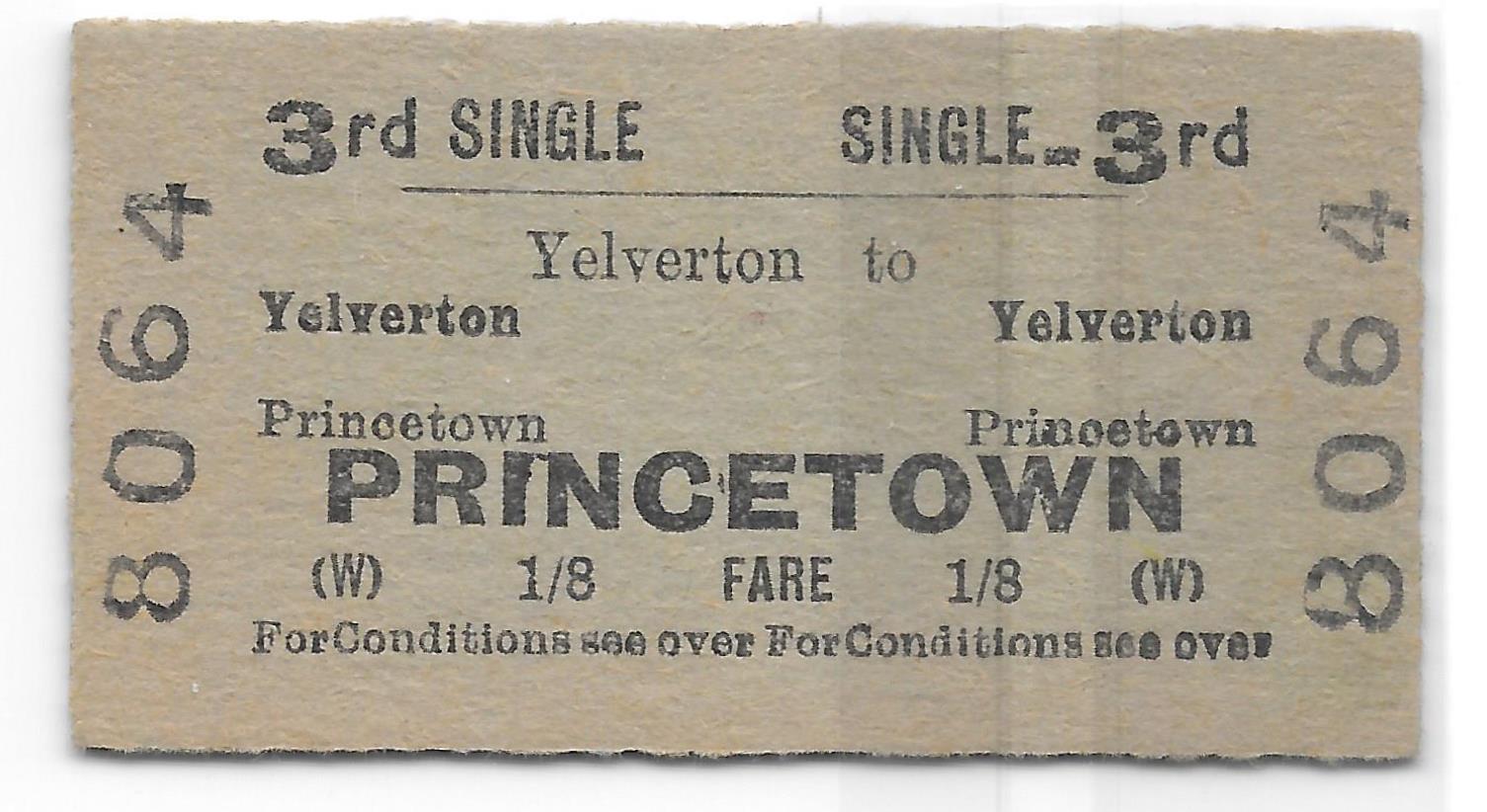
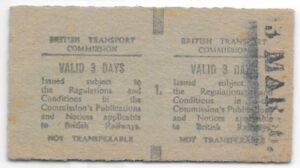 Subsequently, it has been asserted that had an individual come forward with approximately £25,000 during that time, they could have acquired the entire railway line along with its buildings. Sadly, the railway preservation movement was still in its nascent stage, and no one comprehended the potential of safeguarding one of Britain’s most breath-taking railway journeys.
Subsequently, it has been asserted that had an individual come forward with approximately £25,000 during that time, they could have acquired the entire railway line along with its buildings. Sadly, the railway preservation movement was still in its nascent stage, and no one comprehended the potential of safeguarding one of Britain’s most breath-taking railway journeys.
Significantly, a proposal emerged in the months of August and September 1956, spearheaded by a certain Mr P Morshead and receiving support from Lydford Parish Council. The proposal aimed to purchase the track, re-lay it to a narrow gauge, and employ three narrow gauge tank locomotives to operate trains between Yelverton Station and Dousland Station. The intention was to generate revenue that could be used to reopen the remaining stretch of the railway line.
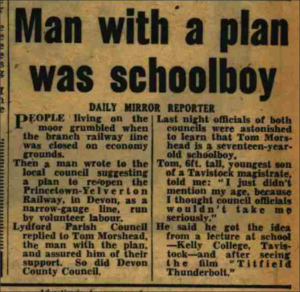
It turned out that the proposal came from 17 year-old Tom Morshead, a pupil at nearby Kelly College.
Man with a plan was schoolboy
DAILY MIRROR REPORTER
PEOPLE living on the moor grumbled when the branch railway line was closed on economy grounds. Then a man wrote to the local council suggesting a plan to reopen the Princetown-Yelverton Railway. in Devon, as a narrow-gauge line, run by volunteer labour.
Lydford Parish Council replied to Tom Morshead, the man with the plan, and assured him of their support. So did Devon County Council.
Last night officials of both councils were astonished to learn that Tom Morhead is a seventeen-year- old schoolboy.
Tom, 6ft. tall, youngest son of a Tavistock magistrate, told me: ” I just didn’t mention my age, because I thought council officials wouldn’t take me seriously.” He said be got the idea from a lecture at school —Kelly College, Tavistock—and after seeing the film “Titfield Thunderbolt.”
Riding The Rails: Exploring Dartmoor From Yelverton To Princetown
A highly informative DVD, produced by Aarchive Films, called ‘Yelverton to Princetown, Rails Across The Moor’. It includes old footage of the line and recollections of those who remember this beautiful railway branch. Details here.
Old British News is a free historical newspaper archive offering original British news articles from 1750 to 1950. The service is entirely voluntary and completely free of charge. We provide articles in PDF format to anyone who requests them — worldwide. Whether you’re a genealogist, historian, student or curious reader, this archive is here to help. Click here.



